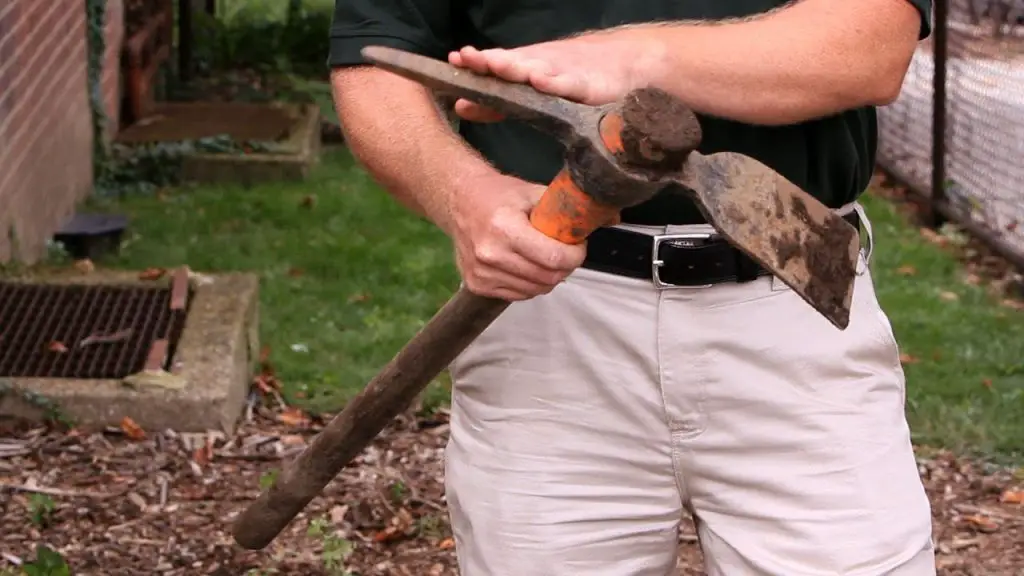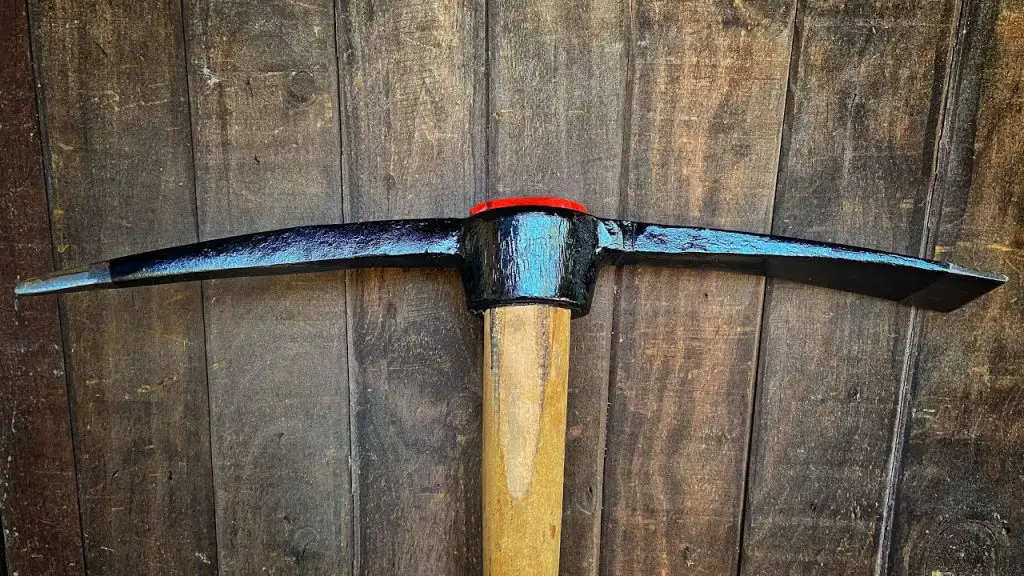A mattock features a flat, horizontal adze-like blade on one side and a pick or axe head on the other, designed for digging, chopping, and loosening soil. A pickaxe has a pointed tip (pick) on one side and a flat, chisel-like edge (adze) on the other, used for breaking hard materials like rocks or ice.
Both a mattock and a pickaxe are very useful tools but they do have key differences in their design and function.
A mattock has a shorter, horizontal blade that is best suited for digging while a pick axe has a longer, thinner blade and is for breaking up rocky soil or clearing trenches.
I have used both tools extensively through my own background in both farming and gardening. They are both extremely useful and have their own strengths and weaknesses.
Let’s explore each tool in more detail.
What is a Mattock?
A mattock is made up of a 3-4 foot shaft that is generally made from wood or composite fiberglass. The head normally has a combination of a vertical axe blade on one side and a horizontal adze blade on the other side and has a weight of 3-7 lb. This gives the mattock head a T-shaped design.
Mattocks are extremely versatile and can be used to do a variety of tasks including:
- Digging through sandy soils
- Hoeing
- Removing Sod
- Cutting and Carving Wood
- Planting
- Removing Stumps
Mattocks are a combination of an axe and a shovel. The ability to use the weight of the head to strike the soil can make it more effective at digging soil than needing to apply force with your foot on a spade.
You can also get a tool that only has a single wide, horizontal blade called an Adze.
If you are more interested in the axe part of a mattock rather than the Adze blade, then have a think about getting a Pulaski axe. Pulaski tools are a favorite with firefighters as it gives them the ability to cut wood and clear firebreaks.

What is a Pickaxe?
A pickaxe has a similar handle to a mattock made of wood or fiberglass, but the design of the head is where it differs. The main difference in that a pickaxe doesn’t have a wide, horizontal adze blade, but instead has a longer and thinner pick blade. This makes it better suited for penetrating deeper into hard to dig soils.
A pickaxe is commonly used in mining for digging through hard rocks.
A list of uses of a pickaxe include:
- Digging through rocky or clay soils
- Chipping rocks in mining
- Digging trenches
A pickaxe doesn’t have the capability of cutting or carving wood.
A lighter version of a pickaxe is called a railroad pick.

What is the Difference?
A pickaxe doesn’t have a mattock’s wide horizontal blade but a long, thin blade instead. The thinner blade of the pickaxe allows it to penetrate rocky or clay soils deeper, making it more suited for those conditions. The mattock is better suited for removing larger quantities of softer soils.
When you are deciding on which tool best suits your requirements of a mattock vs pickaxe, I would suggest thinking about your individual jobs you will be using it for and the type of soils you will be digging. If you have hard to dig, rocky, or clay soils then I would recommend a pickaxe, but if you have sandy or easy to dig soils then a mattock makes more sense.
